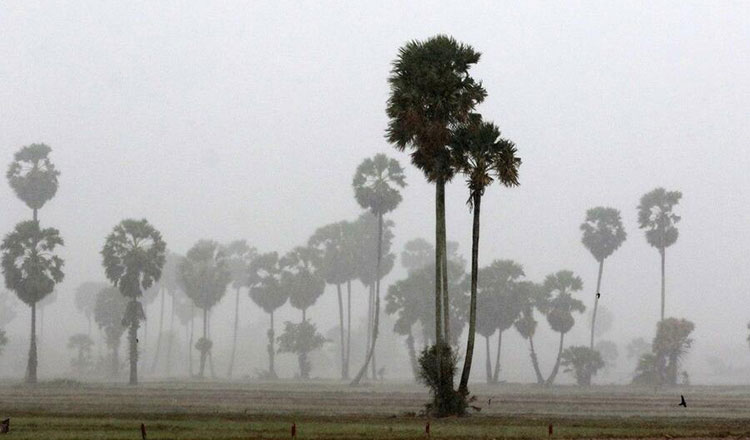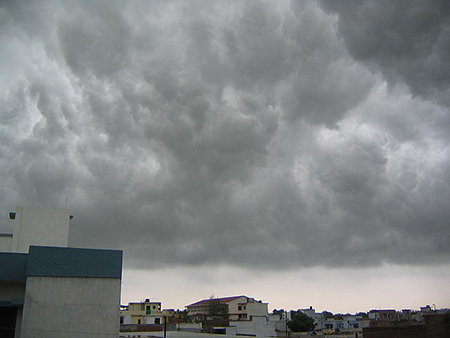Monsoon winds are a critical meteorological phenomenon that significantly impacts the climate, agriculture, and livelihoods of millions of people, particularly in Asia, Africa, and the Indian subcontinent. These seasonal winds are characterized by a dramatic reversal in direction and bring substantial changes in weather patterns, often leading to wet and dry seasons. This article explores the science behind monsoon winds, their causes, effects, and the importance they hold for various regions around the world.

The Science Behind Monsoon Winds
Monsoon winds are essentially large-scale wind systems that reverse direction with the changing seasons. The term “monsoon” is derived from the Arabic word “mausim,” meaning “season,” reflecting the seasonal nature of these winds. The primary driver of monsoon winds is the differential heating between land and sea, leading to significant pressure differences that set the winds in motion.
1. Differential Heating
During the summer months, the land heats up much faster than the adjacent ocean. This is because land has a lower specific heat capacity compared to water, meaning it requires less energy to increase its temperature. As a result, the land’s surface temperature rises significantly, creating a low-pressure zone over the continent.
Conversely, the ocean heats up more slowly and maintains a relatively cooler temperature, resulting in a high-pressure zone over the water. The pressure difference between the land and the ocean drives the winds from the high-pressure area (ocean) to the low-pressure area (land), bringing moist oceanic air inland. This moist air ascends, cools, and condenses, leading to the heavy rainfall characteristic of the monsoon season.
2. Seasonal Reversal
In winter, the process reverses. The land cools down faster than the ocean, creating a high-pressure zone over the continent and a low-pressure zone over the ocean. The winds then blow from the land (high-pressure) to the ocean (low-pressure), bringing dry conditions to the land and ending the monsoon rains.
Types of Monsoons
Monsoons are typically categorized based on their geographic location and the direction of the prevailing winds. The two primary types are the South Asian Monsoon and the East Asian Monsoon, but other regions also experience monsoonal patterns.
1. South Asian Monsoon

The South Asian Monsoon, also known as the Indian Monsoon, is one of the most prominent and influential monsoon systems in the world. It has two distinct phases: the southwest monsoon and the northeast monsoon.
- Southwest Monsoon: Occurs from June to September, bringing heavy rainfall to India, Bangladesh, Nepal, Bhutan, and parts of Pakistan. The winds blow from the southwest, carrying moist air from the Indian Ocean.
- Northeast Monsoon: Occurs from October to December, primarily affecting southeastern India and Sri Lanka. The winds blow from the northeast, bringing dry air from the Indian subcontinent.
2. East Asian Monsoon
The East Asian Monsoon affects China, Japan, the Korean Peninsula, and Taiwan. It also has two phases:
- Summer Monsoon: Occurs from May to August, with winds blowing from the southeast, bringing moist air from the Pacific Ocean and causing heavy rains.
- Winter Monsoon: Occurs from November to March, with winds blowing from the northwest, bringing dry and cold air from the interior of the continent.
Causes of Monsoon Winds
Several factors contribute to the formation and intensity of monsoon winds, including:
- Coriolis Effect: The Earth’s rotation influences wind direction. In the Northern Hemisphere, winds are deflected to the right, while in the Southern Hemisphere, they are deflected to the left. This deflection plays a crucial role in the development of monsoon patterns.
- Intertropical Convergence Zone (ITCZ): The ITCZ is a region near the equator where the trade winds from both hemispheres converge, causing significant cloud formation and precipitation. The northward and southward movement of the ITCZ with the seasons affects the timing and intensity of monsoon rains.
- Topography: Mountain ranges, such as the Himalayas, play a significant role in the monsoon system. They act as barriers that force moist air to rise, cool, and condense, leading to orographic rainfall.
- El Niño-Southern Oscillation (ENSO): ENSO events can influence monsoon patterns by altering sea surface temperatures in the Pacific Ocean. El Niño tends to weaken monsoon rains, while La Niña can enhance them.
Effects of Monsoon Winds
Monsoon winds have profound effects on the regions they affect, influencing weather patterns, agriculture, water resources, and economies.

1. Weather Patterns
Monsoon winds are responsible for dramatic changes in weather patterns, causing distinct wet and dry seasons. During the wet season, heavy rainfall can lead to flooding, landslides, and other natural disasters. Conversely, the dry season can result in droughts and water shortages.
2. Agriculture
Agriculture in monsoon-affected regions is heavily udintogel dependent on the timely arrival and intensity of monsoon rains. The rains replenish soil moisture, fill reservoirs, and support the growth of crops such as rice, which require substantial water. However, variability in monsoon rains can lead to crop failures and food insecurity.
3. Water Resources
Monsoon rains are a crucial source of freshwater, replenishing rivers, lakes, and groundwater. This is essential for drinking water supplies, irrigation, and hydropower generation. Inadequate monsoon rains can lead to water scarcity and affect millions of people.
4. Economy
The economy of many countries, particularly in South Asia, is closely linked to the monsoon. Good monsoon rains can boost agricultural output, increase rural incomes, and drive economic growth. Conversely, poor monsoon rains can lead to agricultural losses, higher food prices, and economic stress.
Importance of Monsoon Forecasting
Accurate monsoon forecasting is vital for mitigating the adverse effects of variable monsoon patterns. Advances in meteorology and climate science have improved our ability to predict the onset, intensity, and duration of monsoon rains. This information is crucial for:
- Agricultural Planning: Farmers rely on monsoon forecasts to plan sowing and harvesting schedules, select appropriate crops, and manage irrigation.
- Disaster Preparedness: Governments and disaster management agencies use monsoon forecasts to prepare for potential floods, landslides, and other weather-related emergencies.
- Water Resource Management: Effective management of water resources, including reservoirs and irrigation systems, depends on accurate predictions of monsoon rains.
- Economic Planning: Businesses and policymakers use monsoon forecasts to make informed decisions about investments, resource allocation, and economic strategies.
Conclusion
Monsoon winds are a complex and fascinating meteorological phenomenon that profoundly impacts the lives of millions of people. Understanding the science behind monsoon winds, their causes, and effects is essential for managing their impacts and harnessing their benefits. Accurate monsoon forecasting plays a critical role in supporting agriculture, managing water resources, and preparing for weather-related disasters. As climate change continues to influence global weather patterns, ongoing research and advancements in meteorology will be crucial in adapting to and mitigating the challenges posed by monsoon variability.
Read More Article About “Black Pudding: A Culinary Delight with Rich History“
